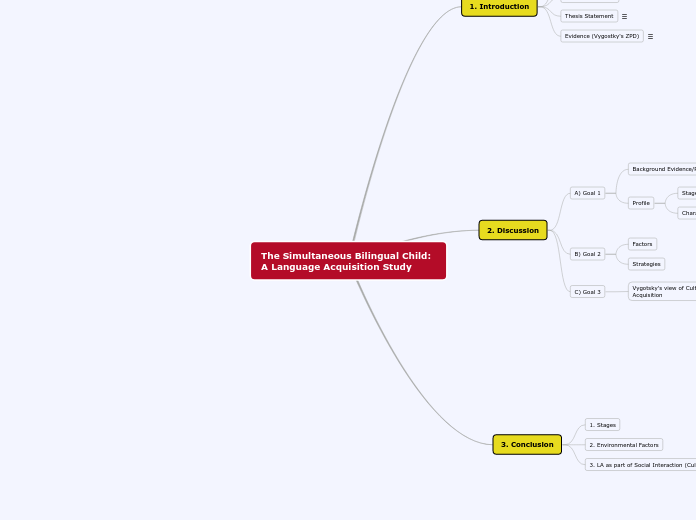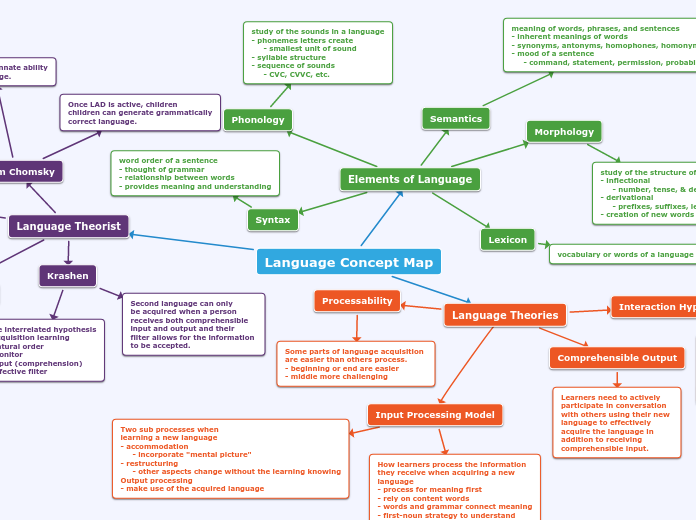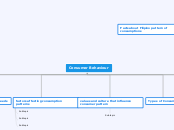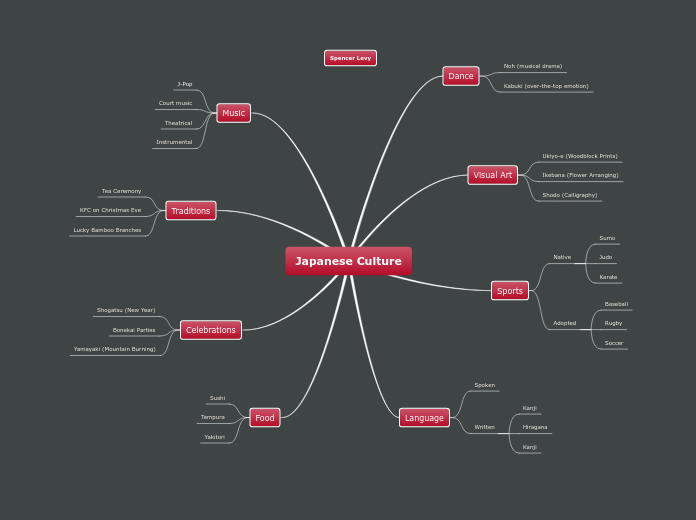The Simultaneous Bilingual Child: A Language Acquisition Study
3. Conclusion
3. LA as part of Social Interaction (Culture)
2. Environmental Factors
1. Stages
2. Discussion
C) Goal 3
Vygotsky's view of Culture and its implication on Language Acquisition
B) Goal 2
Strategies
Factors
A) Goal 1
Profile
Characteristics of Bilingual Acquisition
Stages of Billingual Acquistion
Background Evidence/Previous Research
There are some common myths about children growing up
bilingually; first, it is often claimed that hearing two or more
languages will confuse the child and lead to grave problems in
acquiring language. Second, it is claimed that the acquisition of
the main language of the environment will stand a better chance
without competition from other language (De Houwer, 1999).
Studies of the language development of such “native bilinguals” suggest that they behave much like monolingual children (Saunders, 1988). They manage to learn two language systems in about the same time and to about the same degree of skill as monolingual children take to learn one.
It is further claimed that small children who are learning to
speak two languages go through a stage of mixing and confusing the two. The use of words from both languages in a single sentence is cited as evidence that the child cannot distinguish between the two languages. According to Romaine (1995), the use of two languages in one sentence by mature bilinguals reveals a great deal of linguistic skill. It is also true that, while young bilingual children sometime use words from two languages in the same sentence, they produce far more sentences using only one language. This clearly shows that they are able to keep their language separate.
1. Introduction
Evidence (Vygostky's ZPD)
Lev S. Vygotsky’s Social Development Theory states that
cognitive development is limited to a certain range at any given age
(the area of current development surrounded by another area of
future development= ZPD); that full cognitive development requires
social interaction; that mediation occurs through the use of tools
or signs of a culture.
One essential tenet in Vygotsky’s theory is the notion of the
existence of what he called the zone of proximal development.
Zone of Proximal development or ZPD refers to the gap or
difference between what the child can learn unaided and what he or she can learn with the help of an adult or a more capable peer.
The idea of assisting the learner is known as scaffolding.
Thesis Statement
This research paper is based on the researcher’s assumption that a bilingual child acquires languages simultaneously as influenced by some factors such as the child’s social environment. This includes the family, the media (particularly the television), and significant others (like relatives and friends).
Aims of the paper
- Present the profile of the simultaneous bilingual child.
- Identify the factors affecting the bilingual child’s acquisition of languages.
- Determine the implication of simultaneous
bilingualism to the development of language and cognition.
Problem/Background
For most children, ages 18 months - 24 months, it is expected that their language is intelligible or comprehensible. However, there are cases wherein at 36 months or 3 years – 5 years old, some children cannot express themselves in an intelligible language. Like in the case of my daughter, Ravine who was two (2) years and 11 months old but can only speak few essential words and phrases and mostly unintelligible lengthy sentences.









